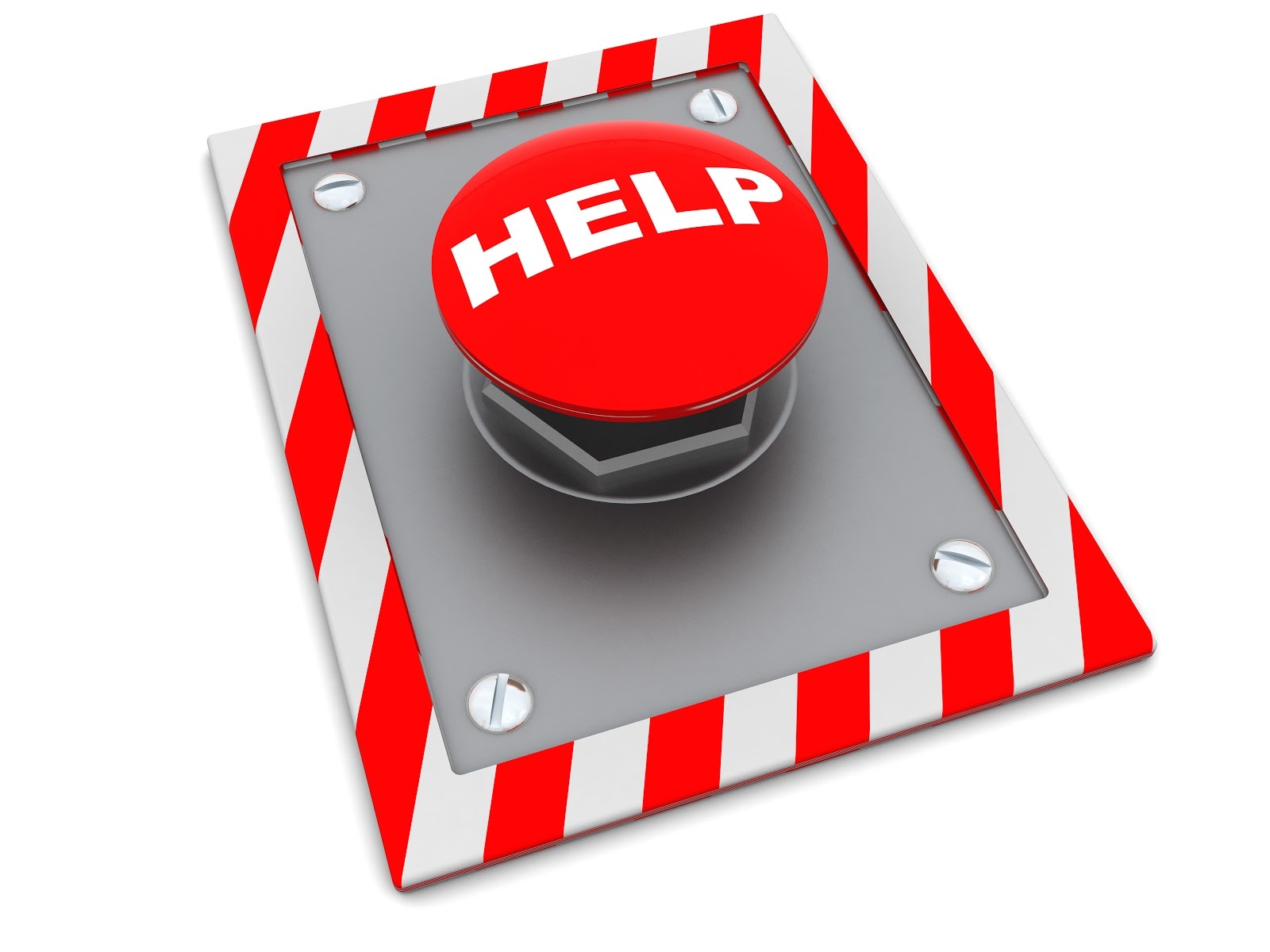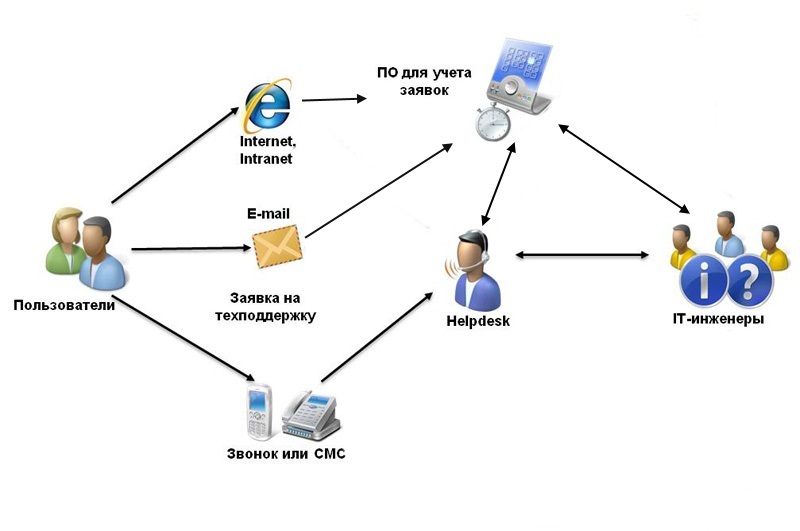Service Desk - quick start. 3 part. Creating a single entry point
In the continuation of the series of articles about building Service ServiceDesk. In the first two articles we came to the conclusion that we really need a ServiceDesk and decided what services it provides. Today let's talk about a single entry point. What it is, what it is for, what benefits it gives.

If you have several engineers in IT, then surely you are faced with a situation where users call them directly. and it is Vasya who calls, since Vasya will do everything quickly, but not Petya, who was busy 2 hours last time and didn’t fix everything.
Such calls directly to specialists lead to the following negative consequences:
Engineers, performing work on the call, often do not enter information about the call (especially if the elimination took no more than 10 minutes). Qualified engineers are more loaded / overloaded, because users want to chat only with them.
')
Engineers with less experience are pushed in, and gain experience more slowly than they could. If the user does not dial up to the engineer, then he reports to his supervisor that nobody in IT takes up the phone. It does not try to contact other engineers.
As a result, you do not see the real picture of what is happening: what kind of calls are coming from users, how loaded are your specialists. There are “blind spots” because of which wrong management decisions can be made.
For example: a remote office, there is a full-time engineer. According to statistics, he has 1-2 applications per week. The decision is made to bring it to an outsourcing. The person is reduced. And then it turns out that he spent all day doing just that he ran between users and constantly repaired and tuned something. Here are just a report about it forgot / did not have time.
Another disadvantage when calling directly - a person may simply not be in place. He is on vacation, on sick leave. The user calls, calls, and no one answers him.
In our case, the single access point is a separate number, which was voiced to all users many times. There were personnel changes in the department, the infrastructure was changing, the call queuing system was changed, the PBX was replaced. But for users there was always one number to call in case of problems with the computer.
A single, impersonal mailbox was also opened, to which all users should send appeals. We strongly emphasize that it would be better if users would write and not call. It is easier for us to work with the mail: fill in the fields in the application, it is possible to process faster, terms are calculated more correctly.
Based on the above, when building ServiceDesk, a single entry point is needed. All user requests (no matter how submitted) should end up in one place. For each channel of information transfer point should be only one. This means if the phone is only one phone number. If mail is only one postal address. If Skype, then only one common account for receiving calls.
Further, the IT department has already set up the routing of calls and the circulation of letters.

After you have created a single point for requests, the next step is to create a single database of all applications. Since calls to one number and all calls in one mailbox are good, but they still have to work with them. Do analytics, look for problem areas, etc.
View of the base does not matter. This may be an Excel file, base 1C, samopisny solution. But she must fit your tasks. To be able to store information in a convenient form, to provide the required reporting.
What must be in the application:
- Application number (its unique identifier)
- Initiator
- Date of the application
- Contact Information
- Critical
- Service
This is the minimum that is necessary for the engineer to start working on the application. Then he enters the required comments, requests additional information and eventually closes the application.
In our practice, there was a case when one of the users sent letters to a completely foreign mail of another company and complained that the IT department ignores it. Having not understood, the user reported the complaint to the top management, following the results of the trial, the user once again had a conversation about where to call and write in case of problems.
To summarize: a single entry point will help reduce the number of problems associated with communications and allow you to have a more complete picture of the appeals. On the basis of this information, it will be possible to make management decisions already.

If you have several engineers in IT, then surely you are faced with a situation where users call them directly. and it is Vasya who calls, since Vasya will do everything quickly, but not Petya, who was busy 2 hours last time and didn’t fix everything.
Such calls directly to specialists lead to the following negative consequences:
Engineers, performing work on the call, often do not enter information about the call (especially if the elimination took no more than 10 minutes). Qualified engineers are more loaded / overloaded, because users want to chat only with them.
')
Engineers with less experience are pushed in, and gain experience more slowly than they could. If the user does not dial up to the engineer, then he reports to his supervisor that nobody in IT takes up the phone. It does not try to contact other engineers.
As a result, you do not see the real picture of what is happening: what kind of calls are coming from users, how loaded are your specialists. There are “blind spots” because of which wrong management decisions can be made.
For example: a remote office, there is a full-time engineer. According to statistics, he has 1-2 applications per week. The decision is made to bring it to an outsourcing. The person is reduced. And then it turns out that he spent all day doing just that he ran between users and constantly repaired and tuned something. Here are just a report about it forgot / did not have time.
Another disadvantage when calling directly - a person may simply not be in place. He is on vacation, on sick leave. The user calls, calls, and no one answers him.
In our case, the single access point is a separate number, which was voiced to all users many times. There were personnel changes in the department, the infrastructure was changing, the call queuing system was changed, the PBX was replaced. But for users there was always one number to call in case of problems with the computer.
A single, impersonal mailbox was also opened, to which all users should send appeals. We strongly emphasize that it would be better if users would write and not call. It is easier for us to work with the mail: fill in the fields in the application, it is possible to process faster, terms are calculated more correctly.
Based on the above, when building ServiceDesk, a single entry point is needed. All user requests (no matter how submitted) should end up in one place. For each channel of information transfer point should be only one. This means if the phone is only one phone number. If mail is only one postal address. If Skype, then only one common account for receiving calls.
Further, the IT department has already set up the routing of calls and the circulation of letters.

After you have created a single point for requests, the next step is to create a single database of all applications. Since calls to one number and all calls in one mailbox are good, but they still have to work with them. Do analytics, look for problem areas, etc.
View of the base does not matter. This may be an Excel file, base 1C, samopisny solution. But she must fit your tasks. To be able to store information in a convenient form, to provide the required reporting.
What must be in the application:
- Application number (its unique identifier)
- Initiator
- Date of the application
- Contact Information
- Critical
- Service
This is the minimum that is necessary for the engineer to start working on the application. Then he enters the required comments, requests additional information and eventually closes the application.
In our practice, there was a case when one of the users sent letters to a completely foreign mail of another company and complained that the IT department ignores it. Having not understood, the user reported the complaint to the top management, following the results of the trial, the user once again had a conversation about where to call and write in case of problems.
To summarize: a single entry point will help reduce the number of problems associated with communications and allow you to have a more complete picture of the appeals. On the basis of this information, it will be possible to make management decisions already.
Source: https://habr.com/ru/post/311802/
All Articles